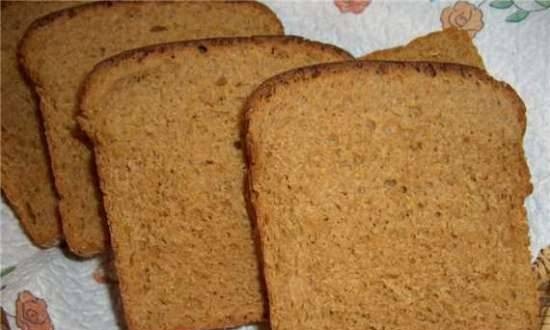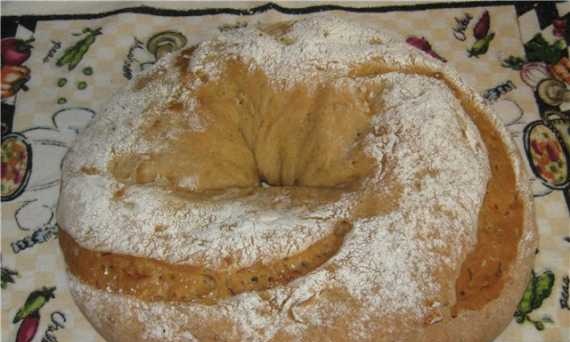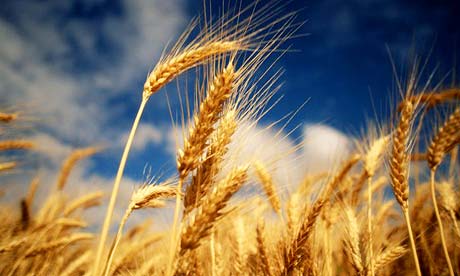|
 In 1851, the Free Economic Society of Russia announced: ten grains of Semikoloski wheat were sent to the members of the society. Sow! Try your luck! What if the harvest doubles, triples, triples? Wheat not just any - sourced from England. And I got to England during the excavation of ancient mummies! In 1851, the Free Economic Society of Russia announced: ten grains of Semikoloski wheat were sent to the members of the society. Sow! Try your luck! What if the harvest doubles, triples, triples? Wheat not just any - sourced from England. And I got to England during the excavation of ancient mummies!
Members of the community eagerly began to experiment. Still would! Get seven ears per stem instead of one! And it's just interesting to look at the wheat of the new geometry. Until now, they knew one shape of an ear - simple, like a cylinder. And now a completely different thing is promised - an ear spread out like a broom. There should be many times more grains in it. Still, there are seven ears, not one. And at the St. Petersburg Exhibition of 1851 even more amazing things could be seen. There they showed the Twenty-Five Columns and even the Thirty Columns. The ears of these wheat had so many branches. To this we must also add that Semikoloska from one grain grew not one stem, but 15-20, and sometimes even 80. It is clear that she was immediately christened with the sonorous name of Grace. And in our time, the bloom is more modest - Branched.
The first experiences of members of the society came out deplorable. The most common ears grew from the grains. No branching. True, some managed to raise the first generation (they were at the exhibition!). But after a year or two, and their Semikoloska degenerated. By the way, it turned out that the story with the mummies is a complete lie. An expert in seed business A. Vilmorin proved that wheat grains do not retain germination for more than twenty years.
Interest in branched wheat has faded. But in 1873, a wheat specialist, Professor E. Chernyaev, received twenty ears of Grace from a landowner from Yekaterinoslav. Real, branched! He wrote that he discovered them by chance, having entered the hut of a local peasant woman. She kept a whole sheaf, stuck behind the icon. I could grow it! They began to find out how and where. It turned out that Semikoloska had been known since the time of Pushkin. They sowed it both in Irkutsk and in Transbaikalia. And the first to get the seeds was the Cossack sergeant Ipat Rusinov from the Irtysh Line.
Wheat yeast bread
Almost a hundred years have passed since the first "mummy" seeds were sent out. The Great Patriotic War of 1941-1945 ended. Branched wheat was talked about again. New experiences, hopes, failures. And, as if repeating a long history, a peasant from Uzbekistan Muslima Begieva managed to grow branched ears. However, she also failed to repeat the success. The reason for the failure, however, is now clear. Semikoloska is a child of the moist, warm Mediterranean. And in order to create a mighty ear, it requires the same climate as at home. Fatty soils. Extra careful care. Then it grows powerful, taller than a person, with a thick, non-sticking straw. The most impressive of all wheat in the world. If we talk about size - the crown of human creation.
It is difficult to create all the necessary conditions for Semikoloski. And is it really necessary? It will be expensive. Plus the flour made from her grain is of a mediocre taste. True, the breeders are not going to completely abandon the Grace. It is used to improve other varieties.
 Despite all the setbacks, breeders could no longer forget about the "crown of creation". And in 1950, Professor D. Kabulov discovered near Samarkand the Ak-bunch wheat landrace, which interested him in large grain. It turned out that Ak-bunch belonged to the same type of turgidum as Grace. Kabulov "conjured" over the old variety and in 1957 he could already declare firmly: a new wheat with such a large grain was created, which history did not know. A thousand grains weighed not 30-40 grams, as usual, but 80! It was named Uzbekistan. Then the professor brought out another variety from it - Samarkand. Despite all the setbacks, breeders could no longer forget about the "crown of creation". And in 1950, Professor D. Kabulov discovered near Samarkand the Ak-bunch wheat landrace, which interested him in large grain. It turned out that Ak-bunch belonged to the same type of turgidum as Grace. Kabulov "conjured" over the old variety and in 1957 he could already declare firmly: a new wheat with such a large grain was created, which history did not know. A thousand grains weighed not 30-40 grams, as usual, but 80! It was named Uzbekistan. Then the professor brought out another variety from it - Samarkand.
Several years passed, and another biologist, A.Esirgaliev from “Uzbek Switzerland” - the city of Karshi, decided to test new varieties, what they are capable of. How many seeds can a spike give? Usually, local wheat has a small ear. There are three dozen grains in it. Esirgaliev had 125! And what is most remarkable, the geometry of the ear has changed. Branches appeared in its lower part - lateral ears. The wheat became branchy. But her parent, Uzbekistan, had no branching.
So victory? Will the branchy Esirgalieva go to the fields? Alas, not yet. Although there are many grains, they are smaller than those of the parent. But it comes in handy in selection. The multi-grain feature is very important. And there are still many difficulties ahead.
And now about some of our landraces. At one time, the correspondent of "Rural Owner" F. Kryshtafovich was very interested in them. He lived in the USA for many years collecting material for his magazine. He had a peculiar hobby. He collected ... pasta! Year after year he bought pasta: American and ours, domestic. Cooked, compared taste, aroma, nutritional value. The American ones were so much worse than ours that they were sold only in the States. They did not dare to export it abroad. Some losses. They tried to mix Russian semolina into their flour, but still the quality remained low.
Sourdough wheat bread
Our Russian flour - Kubanka made from fine South Russian wheat - was especially famous.
Kubanka is still alive. Its flour is yellowish in appearance, but the taste is incomparable!
There is only one more equally tasty wheat - Krymka. She showed herself one and a half centuries ago. It was exported to many European countries and even to Japan.
A. Smirnov. Tops and roots
|
 In 1851, the Free Economic Society of Russia announced: ten grains of Semikoloski wheat were sent to the members of the society. Sow! Try your luck! What if the harvest doubles, triples, triples? Wheat not just any - sourced from England. And I got to England during the excavation of ancient mummies!
In 1851, the Free Economic Society of Russia announced: ten grains of Semikoloski wheat were sent to the members of the society. Sow! Try your luck! What if the harvest doubles, triples, triples? Wheat not just any - sourced from England. And I got to England during the excavation of ancient mummies!









